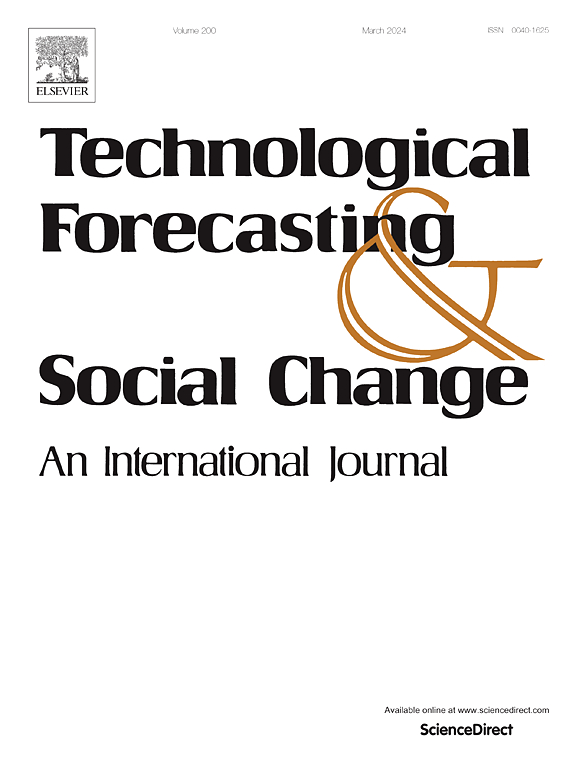Unlocking the economic potential of Direct Air Capture technology: Insights from a component-based learning curve
IF 12.9
1区 管理学
Q1 BUSINESS
Technological Forecasting and Social Change
Pub Date : 2025-03-26
DOI:10.1016/j.techfore.2025.124109
引用次数: 0
Abstract
Direct air capture (DAC) technology is gaining increased attention for its flexibility and effectiveness in carbon removal. However, the high cost of DAC hinders the potential for emission reductions. We provide an approach to help evaluate these costs. To overcome the limitations of poor data quality, high technical complexity, and uncertainty in the cost forecasting of DAC techniques, we develop component-based learning curves based on four available DAC technologies (potassium hydroxide, monoethanolamine, solid amine, and bipolar membrane electrodialysis adsorbents). The results indicate that the capital cost learning rate ranges from 4.87 % to 11.02 % and is influenced by components like contactors and scrubbing towers. In contrast, the operational and maintenance cost learning rate ranges from 13.70 % to 20.61 %, with the key components being contactors and adsorbers. Upon reaching the “learning saturation point”, the levelized (US dollar) cost per ton of carbon dioxide (CO2) capture of the four techniques is projected to decline significantly to 56 % ($120/t CO2), 28 % ($253/t CO2), 23 % ($412/t CO2), and 25 % ($356/t CO2) of their initial values, respectively. Bayesian methods enhance learning rate reliability, and sensitivity analysis reveals energy price fluctuations significantly impact DAC costs. These insights support techno-economic modeling, climate assessments, and strategic DAC deployment.
求助全文
约1分钟内获得全文
求助全文
来源期刊
CiteScore
21.30
自引率
10.80%
发文量
813
期刊介绍:
Technological Forecasting and Social Change is a prominent platform for individuals engaged in the methodology and application of technological forecasting and future studies as planning tools, exploring the interconnectedness of social, environmental, and technological factors.
In addition to serving as a key forum for these discussions, we offer numerous benefits for authors, including complimentary PDFs, a generous copyright policy, exclusive discounts on Elsevier publications, and more.

 求助内容:
求助内容: 应助结果提醒方式:
应助结果提醒方式:


